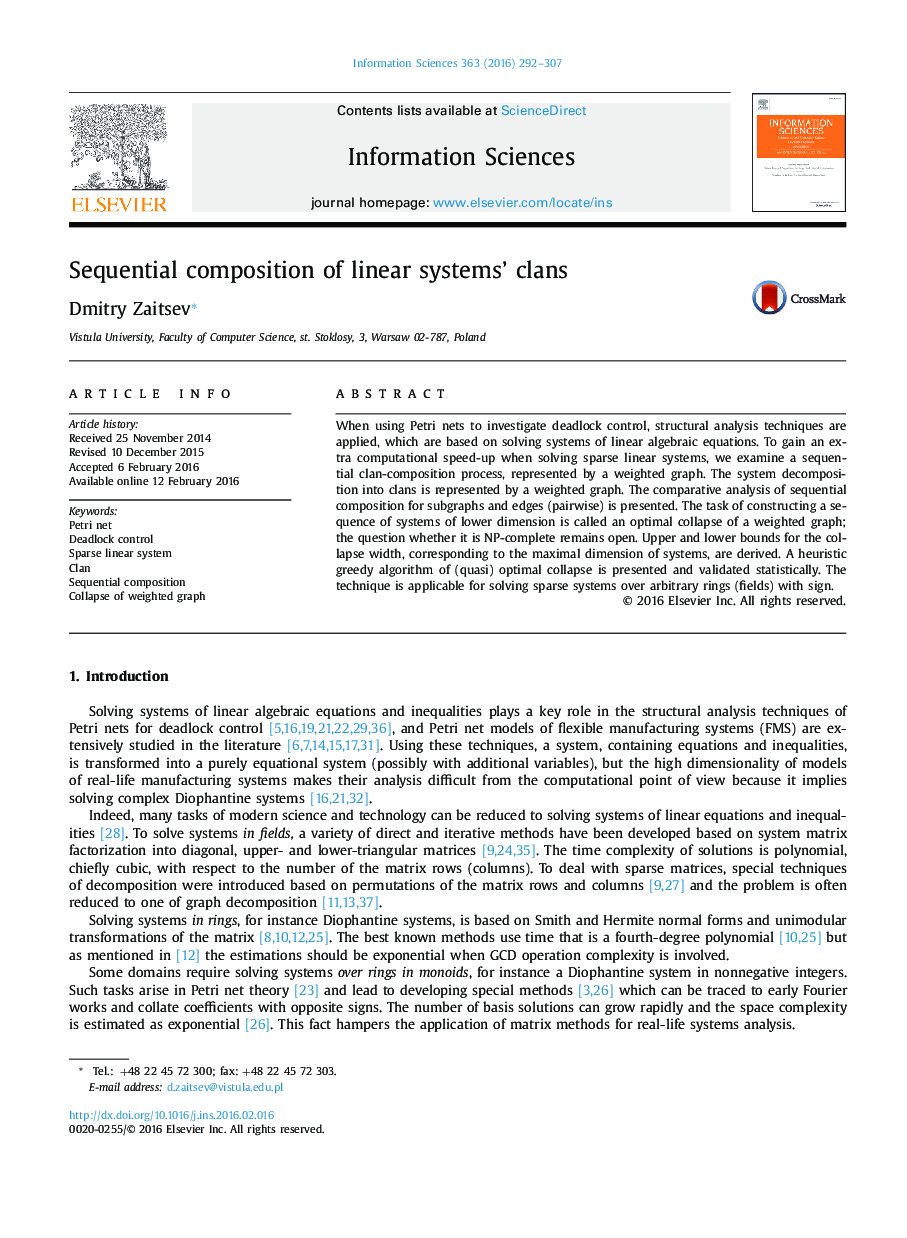| Article ID | Journal | Published Year | Pages | File Type |
|---|---|---|---|---|
| 391683 | Information Sciences | 2016 | 16 Pages |
When using Petri nets to investigate deadlock control, structural analysis techniques are applied, which are based on solving systems of linear algebraic equations. To gain an extra computational speed-up when solving sparse linear systems, we examine a sequential clan-composition process, represented by a weighted graph. The system decomposition into clans is represented by a weighted graph. The comparative analysis of sequential composition for subgraphs and edges (pairwise) is presented. The task of constructing a sequence of systems of lower dimension is called an optimal collapse of a weighted graph; the question whether it is NP-complete remains open. Upper and lower bounds for the collapse width, corresponding to the maximal dimension of systems, are derived. A heuristic greedy algorithm of (quasi) optimal collapse is presented and validated statistically. The technique is applicable for solving sparse systems over arbitrary rings (fields) with sign.
